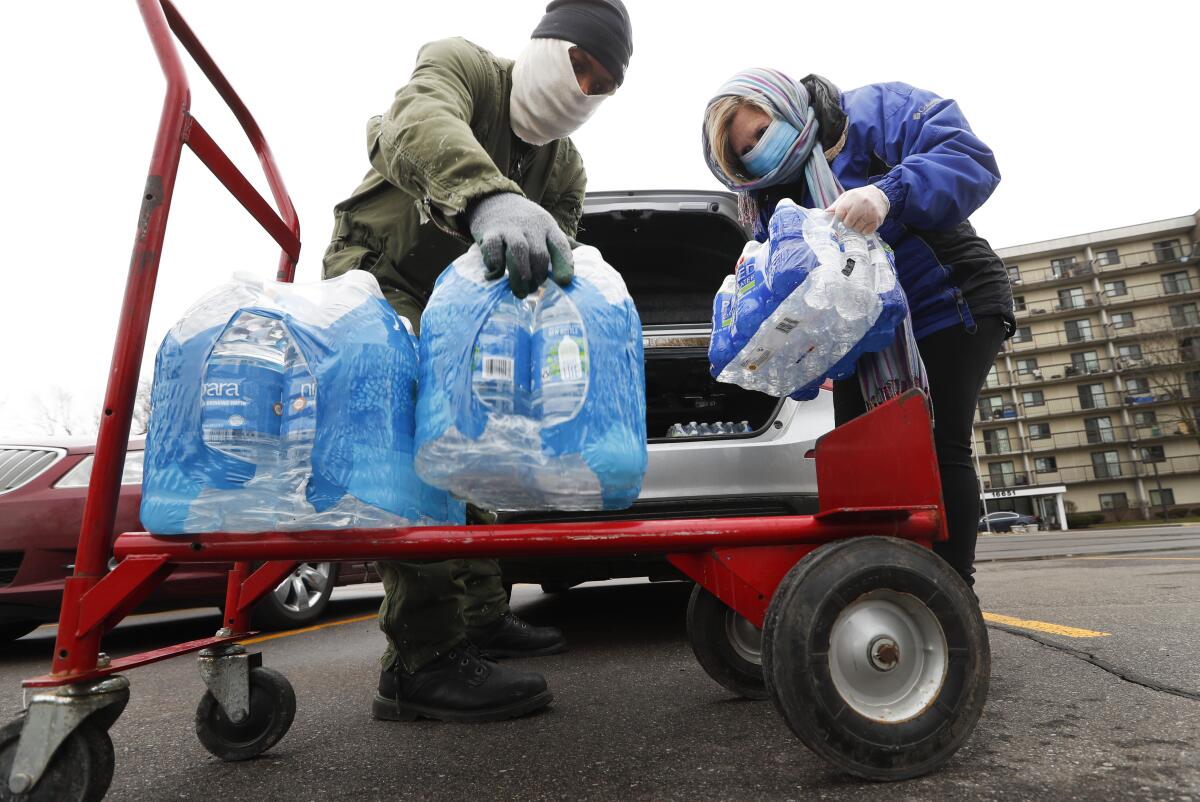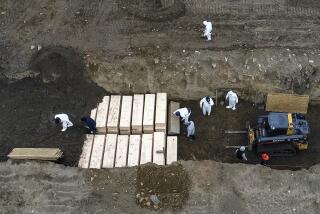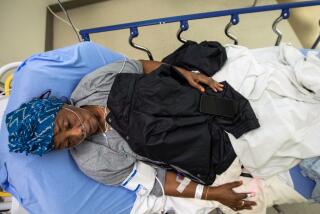Editorial: COVID-19 is disproportionately killing minorities. That’s not a coincidence

- Share via
As COVID-19 spreads across the United States, Americans can see the grim daily tallies of the cases and deaths, broken down by geography, age and sex. Only a few jurisdictions, however, are breaking down the numbers by racial and ethnic groups as well, and the story those figures tell when they’re available is disturbing.
In Michigan, for example, African Americans accounted for 33% of COVID-19 cases and 41% of deaths as of Monday, though they represent only 14% of the overall population. In Chicago, 72% of the deaths have been among the city’s black residents, though they make up 29% of the population. The numbers are almost identical in Louisiana.
Shocking as these numbers are, none of this comes as a particular surprise to public health experts. African Americans are far more likely to suffer from the underlying health problems that are associated with serious and fatal COVID-19 outcomes: Black adults are nearly twice as likely as white adults to have diabetes and 40% more likely to have high blood pressure. Rates of obesity and asthma also are higher.
Because of poverty and other barriers, African Americans are less likely to have access to regular medical care. They’re more likely to live in neighborhoods where markets selling fresh, nutritious food are scarce. As a result of these factors, long before coronavirus came on the scene, black life expectancy has been several years shorter than that of the population as a whole.
Asian Americans have to fear both the coronavirus and being scapegoated and attacked for the disease.
This has been an ongoing health crisis at a national scale, yet it has simmered in the background of American consciousness. The medical and public-health systems have undertaken various programs to combat these systemic health disparities, but the work it would take to change this inequality — the level of effort required to combat, say, a pandemic — has never been a national priority.
Now that the novel coronavirus is running amok — and many African Americans employed in service jobs that require them to show up at workplaces, raising the risk of exposure — all those health-related issues are adding up to a tornado of frightening death statistics.
Similar health and poverty issues threaten to put Latinos and Native Americans at higher risk of complications from COVID-19 as well. Life expectancy among Latinos is actually higher than that of the population as a whole, but the rates of obesity and diabetes, two factors associated with COVID-19 complications, are significantly higher. Rates of diabetes and heart disease are much higher among Native Americans than among the white population.
By laying bare the stark figures on illness and death by race and ethnicity, the current pandemic could create a moment for acknowledging these unacceptable health gaps and doing something about them. But that won’t happen as long as the numbers aren’t reported consistently, comprehensively and clearly. The public would be unaware that men were more likely to die of the disease than women if the numbers weren’t regularly reported.
In Los Angeles County, which released its first racial and ethnic numbers Tuesday, 17% of the deaths were among African Americans, though they make up only 9% of the county’s population. But those are based on partial numbers; county public health director Barbara Ferrer expressed frustration that information about race and ethnicity was missing from close to half the reports she receives.
Reporting the full data might not seem crucial to medical personnel overwhelmed by the challenges of battling COVID-19. But it is. Every county and state should demand full demographic figures from doctors and hospitals, and then collect and disseminate that information. That data should be included not only with the number of cases and deaths, but also with the number of people tested and the kind of treatments delivered. This country’s medical system has a history of treating racial and ethnic groups differently for the same problems; a 2019 study found that Latino and black patients in emergency rooms were less likely to receive medication for acute pain than white patients.
The data could help decision makers determine, for example, whether testing should be increased among disproportionately affected populations to allow for earlier, more effective quarantining and quicker medical intervention. More importantly, it should compel us to take the drastic action needed to close the shameful health disparities in our country. None of this will happen, though, until we’re forced to face the numbers.
More to Read
A cure for the common opinion
Get thought-provoking perspectives with our weekly newsletter.
You may occasionally receive promotional content from the Los Angeles Times.











